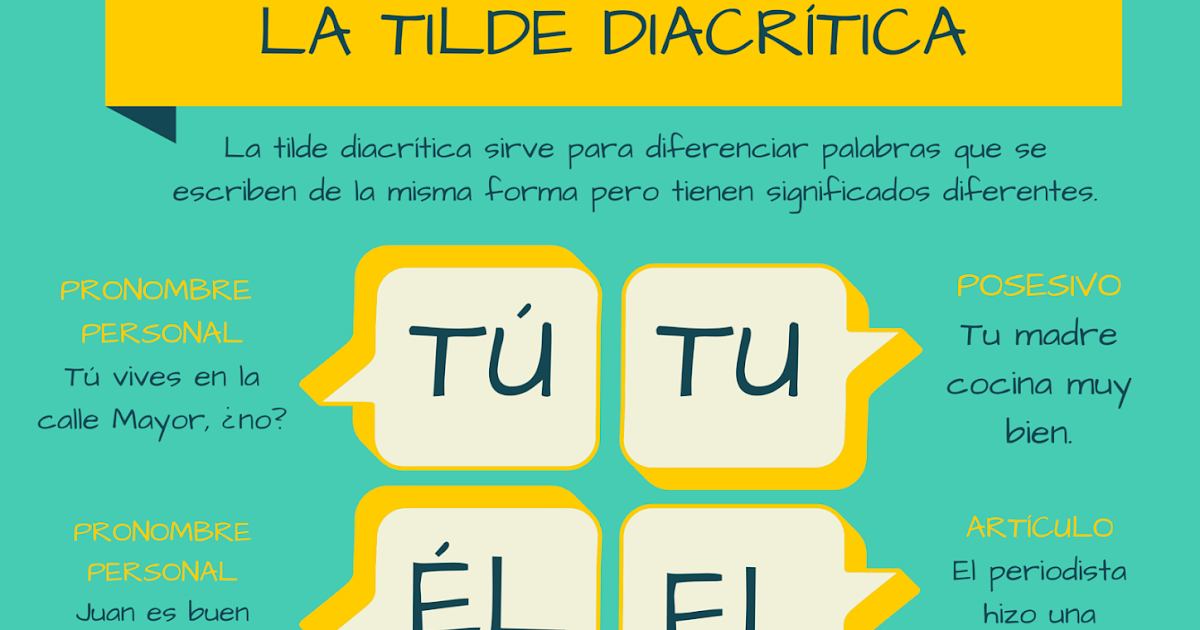The Spanish language is rich and complex, often filled with nuances that can change the meaning of a word entirely. One such nuance is the tilde, a small accent mark that can significantly alter the pronunciation and meaning of words. The phrase "que con tilde" refers to the use of the accent mark in conjunction with the word "que." This article will delve into the significance of this grammatical feature, exploring its implications for both written and spoken Spanish.
The tilde is not merely an aesthetic addition to letters; it plays a crucial role in guiding correct pronunciation and comprehension. For non-native speakers or learners of Spanish, understanding when to use "que con tilde" can be a challenge. It is essential to grasp the difference between "qué," "que," and "quien," as each serves unique functions within sentences. This article aims to clarify these distinctions and provide insights into the correct usage of "que con tilde."
As we explore the intricacies of "que con tilde," we will answer common questions surrounding its usage, providing examples and tips to ensure clarity in communication. Whether you're a student of the Spanish language or a native speaker looking to refine your grammar skills, understanding the importance of "que con tilde" is vital for effective communication.
What is "Que con Tilde"?
"Que con tilde" refers to the word "qué," which translates to "what" in English when used as an interrogative or exclamatory pronoun. The accent mark indicates that the word is being used to ask a question or express surprise. For example, "¿Qué quieres?" translates to "What do you want?" The tilde alters the pronunciation, emphasizing the questioning tone.
Why is the Tilde Important in Spanish?
The tilde serves several critical functions in the Spanish language:
- It differentiates between similar-sounding words.
- It indicates the stress of syllables in pronunciation.
- It aids in comprehension by clarifying the intended meaning.
- It helps distinguish between statements and questions.
How Does "Que con Tilde" Change Meaning?
The presence or absence of a tilde can completely change a word's meaning. For instance, "que" without a tilde functions as a conjunction meaning "that," while "qué" with a tilde functions as an interrogative pronoun. This distinction is crucial in both written and spoken contexts. For example:
- Que: "Dijo que vendría." (He said that he would come.)
- Qué: "¿Qué dijo?" (What did he say?)
When Should You Use "Que con Tilde"?
Understanding when to use "que con tilde" involves recognizing the context of the sentence. Here are some guidelines:
- Use "qué" when asking questions.
- Use "qué" in exclamatory sentences to express surprise or emotion.
- Use "que" when connecting clauses or introducing relative clauses.
Are There Exceptions to the Rule?
While the rules surrounding "que con tilde" are generally straightforward, exceptions do exist. Certain regional dialects may exhibit variations in pronunciation or usage, leading to differing interpretations of the tilde. Additionally, poetic or artistic license may allow deviations from standard grammatical rules. However, for learners and non-native speakers, adhering to standard rules is advisable for clarity.
Can "Que con Tilde" Be Used in Different Contexts?
Indeed, "que con tilde" can be utilized in various contexts. Here are some examples:
- In Direct Questions: "¿Qué hora es?" (What time is it?)
- In Exclamations: "¡Qué bonito es este lugar!" (How beautiful this place is!)
- In Indirect Questions: "No sé qué hacer." (I don't know what to do.)
Is There a Cultural Significance to "Que con Tilde"?
The use of "que con tilde" is not only a grammatical necessity but also a reflection of cultural nuances in Spanish-speaking communities. Language is deeply intertwined with culture, and understanding the subtleties of "que con tilde" can enhance one's appreciation of Spanish literature, poetry, and conversational dynamics. Mastering this aspect can lead to more profound connections with native speakers and a richer understanding of the language.
How Can You Practice Using "Que con Tilde"?
Practicing the correct use of "que con tilde" involves various techniques:
- Engaging in conversation with native speakers.
- Reading books and articles in Spanish.
- Writing sentences using both "qué" and "que" to solidify understanding.
- Listening to Spanish music or watching films to hear proper usage in context.
Conclusion: Mastering "Que con Tilde"
In conclusion, understanding "que con tilde" is essential for anyone wanting to communicate effectively in Spanish. The tilde is more than just a mark; it is a key component of meaning and clarity. By mastering this aspect of Spanish grammar, learners can enhance their language skills and connect more deeply with the rich tapestry of Spanish-speaking cultures. Whether you are writing, speaking, or simply enjoying the beauty of the language, remember the importance of "que con tilde" in your journey to fluency.
Understanding The Difference Between A Fade And A Taper
Unlocking The Fun: The Ultimate Guide To Rick Roll Roblox ID
Exploring The Journey Of Natanael Cano Through His First Song


